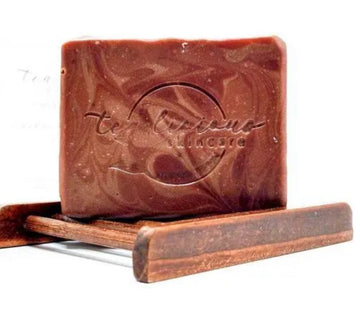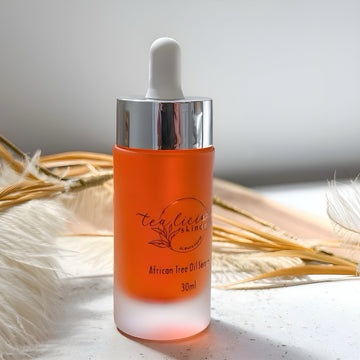As someone who has always been passionate about skincare, I often ponder the connection between our skin and our overall health. One of the areas that can reveal a lot about our well-being is our feet, particularly the heels. Chronic dry, cracked heels are not just a cosmetic issue; they can be indicative of deeper health concerns. In this blog, I’ll delve into the real causes of this condition, what it signifies about our overall health, and how natural herbal salves which contain urea can provide effective relief.
The Underlying Causes of Dry, Cracked Heels
For years my heels suffered from permanent dryness, and cracked to the point of bleeding. I wondered what could be causing it. After some research, I discovered that several factors contribute to this common issue:
Environmental Factors
Exposure to harsh weather, particularly cold and dry air, can significantly deplete the skin’s natural moisture levels. Cold temperatures constrict blood vessels, reducing circulation to the skin and impairing its ability to retain moisture. Additionally, low humidity in winter exacerbates this issue, leading to increased evaporation of moisture from the skin.
Health Conditions
Chronic conditions like diabetes, eczema, and thyroid issues significantly impact skin health due to their physiological effects. Diabetes can lead to poor blood circulation and nerve damage, hindering the skin's ability to heal and increasing the risk of infections. Eczema, characterized by inflammation, causes dry, itchy skin, resulting in a compromised skin barrier that is susceptible to irritants and allergens. Thyroid disorders can cause skin changes, such as dryness or increased sensitivity, due to hormonal imbalances affecting oil production. These conditions highlight the interconnectedness of systemic health and skin integrity, underscoring the importance of holistic management and care.
Dehydration
Hydration is essential for maintaining skin elasticity and overall health. Just as our bodies rely on water for various functions, our skin needs adequate moisture to stay supple and vibrant. When water intake is insufficient, the skin can become dehydrated, leading to dryness, flakiness, and a rough texture. This is particularly noticeable in areas like the heels, which may lack oil glands and are prone to cracking when dehydrated. Hydrated skin retains its natural barrier function, preventing external irritants from causing damage. Thus, consistent water intake is crucial for supporting skin health and preventing dryness and discomfort.
Poor Foot Care
Caring for your feet is essential to prevent issues like dry, cracked skin, particularly in the heel area. Here are some effective strategies for better foot care:
Cleaning
Wash your feet daily with mild soap and warm water to remove dirt and dead skin. One of the most vital steps I have personally taken to prevent the chronically cracked heels I suffered for years, was ensuring my heels were dried very well with an absorbent towel when I get out the shower. Since I have a spinal cord injury I have difficulties standing, or balancing on one leg, so used this awkwardness as an excuse to skip over doing it. There came a point in time I had to choose between solving that problem of being unable to balance and find a solution, or have painful, bleeding heels. It’s sounds so simplistic now, but at the time it didn’t seem to be that simple. I think I just made it more difficult than it should’ve been!
Exfoliation
Use a pumice stone or foot scrub to gently exfoliate the feet, especially the heels, to remove dead skin buildup. This is best done once a week to maintain once your heels are no longer cracked and dry. More often up to that point. Another way to enjoy a little extra self care is using a foaming sugar scrub, never salt scrubs. Why? Salt scrubs dry the skin due to the nature of salt which attracts moisture and can draw water out from the skin. While they effectively exfoliate dead skin cells, this process can strip away natural oils, disrupting the skin's moisture barrier and leading to dryness, especially if used too frequently.
Moisturization
Apply a rich foot cream or moisturizer after washing to keep the skin hydrated and prevent dryness. But not just any moisturizer will do for the feet. I have outlined this in more detail below under the heading The Power of Natural Herbal Salves.
Hydration
Drink plenty of water to maintain overall skin hydration from within. 6 glasses of water a day is a great target, and if you’re like me and don’t enjoy drinking water unless thirsty, simply start with one cup a day which is very manageable, and build it up from there.
Footwear Choices
Wear well-fitting shoes that provide support and comfort, avoiding tight or restrictive footwear that can lead to friction and skin issues. Be kind to your feet when it comes to taking care of them! Our feet support our entire body and carry us through daily activities, so keeping them healthy can is crucial for mobility and overall well-being; any foot problems can lead to altered gait and may cause strain on other parts of the body, such as the knees and back. Ultimately, healthy feet contribute to better quality of life, allowing us to stay active and enjoy our daily routines.
Professional Care
Seeing a podiatrist for good foot health is something I consider essential for several reasons. Podiatrists are specialized healthcare professionals who can diagnose and treat a wide range of foot and ankle conditions, from common issues like plantar fasciitis and bunions to more complex problems related to diabetes or circulation. Regular visits help me prevent minor issues from escalating into more serious conditions, ensuring that any pain or discomfort is addressed promptly. They also provide tailored advice on proper footwear, orthotics, and exercises that enhance my foot health and function. Plus, I appreciate the education they offer about proper foot care practices, especially since I know that risk factors due to neurological damage in my feet which can lead to complications. Overall, seeing a podiatrist has helped me maintain healthy, pain-free feet, which is crucial for my mobility and quality of life.
Nutrition
I've come to realize that nutritional deficiencies can significantly impact my skin health. When I noticed my skin becoming dry and dull, I learned that a lack of essential nutrients, especially vitamins A, E, and omega fatty acids, could be the culprit. This realization was a wake-up call for me to reevaluate my diet. I started focusing on incorporating more nutrient-rich foods, like leafy greens, nuts, seeds, and fatty fish, to ensure I'm getting the essential vitamins and healthy fats my skin needs. Since making these changes, I've noticed a positive difference in my skin's hydration and overall appearance.I've come to realize that nutritional deficiencies can significantly impact my skin health. When I noticed my skin becoming dry and dull, I learned that a lack of essential nutrients, especially vitamins A, E, and omega fatty acids, could be the culprit. This realization was a wake-up call for me to reevaluate my diet. I started focusing on incorporating more nutrient-rich foods, like leafy greens, nuts, seeds, and fatty fish, to ensure I'm getting the essential vitamins and healthy fats my skin needs. Since making these changes, I've noticed a positive difference in my skin's hydration and overall appearance.
What Cracked Heels Reveal About Overall Health
When I began to focus on my feet, I recognized that this often-overlooked area deserves just as much attention as the rest of my body. I started incorporating regular foot care routines, like moisturizing and exfoliating, and I made a conscious effort to stay hydrated and eat a balanced diet rich in essential nutrients. By prioritizing the health of my feet, I not only improved their appearance but also felt a positive impact on my overall well-being. Taking care of my skin has become a crucial part of my self-care, reminding me that every aspect of my body is interconnected.
The Power of Natural Herbal Salves
In my journey to discover natural remedies, I decided to incorporate plant-based urea into my salves. One of these vital ingredients is urea. Urea is a remarkable compound known for its moisturizing properties and ability to improve skin health. It is a natural component of the skin's barrier, playing a crucial role in maintaining moisture levels and promoting the shedding of dead skin cells.
Plant-based urea, derived from sources like sugar beets, has similar benefits to synthetic urea but is gentler and more environmentally friendly. When I added it to my salves, I noticed that it significantly improved the texture and effectiveness of my foot care products.
Urea works in several key ways. First, it acts as a humectant, meaning it draws moisture from the environment into the skin, helping to keep it hydrated. This is especially helpful for areas that tend to be dry and cracked, like my heels. By retaining moisture, urea helps to soften the skin, making it more pliable and reducing the likelihood of further cracking.
Additionally, urea aids in the natural exfoliation process. It breaks down the bonds between thick dead skin cells, encouraging their removal and promoting the growth of healthier skin beneath. This gentle exfoliation not only helps to smooth rough patches but also enhances the overall appearance of the skin.
As I began formulating my foot salve with plant-based urea, I combined it with other nourishing ingredients like shea butter, lavender oil and other outstanding essential oils included for their healing properties. This synergy created a powerful blend that not only moisturized but also soothed and repaired my skin. The result has been softer, healthier feet that feel revitalized. Incorporating plant-based urea into my skincare routine has truly transformed my approach to foot care, allowing me to harness the benefits of this remarkable ingredient while embracing a more natural lifestyle.
Shea Butter
Rich in vitamins and fatty acids, shea butter deeply moisturizes and nourishes the skin. Applying it to cracked heels can significantly improve their texture.
Coconut Oil
This versatile oil has antifungal and antibacterial properties. It acts as a natural barrier, locking in moisture and promoting healing.
Lavender
Not only does it have a calming scent, but lavender oil also helps to heal and moisturize the skin. Aldo, a foot soak with lavender essential oil is one of my favorite relaxation rituals.
Conclusion
Chronic dry, cracked heels can be a reflection of our overall health, and understanding the underlying causes is crucial. By incorporating natural remedies like herbal salves and urea-based products into my routine, I’ve experienced significant improvements in my skin’s condition. Remember, looking after your skin is an essential aspect of overall wellness. By focusing on all-natural ingredients and adopting a mindful skincare routine, we can achieve beautiful, healthy skin and, ultimately, happier feet.
#LookAfterYourSkin #AllNaturalIngredients #FootSalves #SkincareEssentials #GoodForYourSkin #Premium #NaturalBeautyTips #Premium #TransformYourFeet #FootHealthCare #Dryness






